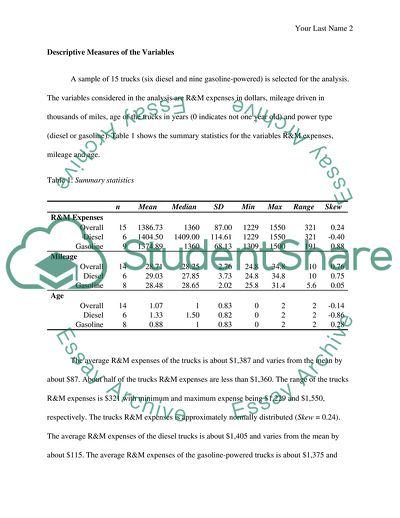Cite this document
(Whether the R&M Expense of the Diesel Trucks Is More than the Statistics Project Example | Topics and Well Written Essays - 2500 words, n.d.)
Whether the R&M Expense of the Diesel Trucks Is More than the Statistics Project Example | Topics and Well Written Essays - 2500 words. https://studentshare.org/statistics/1854698-data-analysis
Whether the R&M Expense of the Diesel Trucks Is More than the Statistics Project Example | Topics and Well Written Essays - 2500 words. https://studentshare.org/statistics/1854698-data-analysis
(Whether the R&M Expense of the Diesel Trucks Is More Than the Statistics Project Example | Topics and Well Written Essays - 2500 Words)
Whether the R&M Expense of the Diesel Trucks Is More Than the Statistics Project Example | Topics and Well Written Essays - 2500 Words. https://studentshare.org/statistics/1854698-data-analysis.
Whether the R&M Expense of the Diesel Trucks Is More Than the Statistics Project Example | Topics and Well Written Essays - 2500 Words. https://studentshare.org/statistics/1854698-data-analysis.
“Whether the R&M Expense of the Diesel Trucks Is More Than the Statistics Project Example | Topics and Well Written Essays - 2500 Words”. https://studentshare.org/statistics/1854698-data-analysis.


